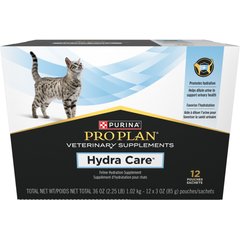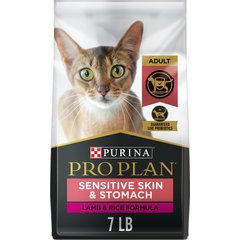Can Cats Get a Sunburn?
With the warm weather and long days upon us, we all want to be outside. Nothing beats spending time in the sun surrounded by our loved ones, including our cats. Cats love the heat, and spending time outdoors with them is a great way to enrich their lives. However, during these hot summer months, it’s critical to protect our feline friends from the harmful effects of the sun.
In this article, you’ll learn how to keep your cat safe and understand the signs and symptoms of too much sun exposure.
Do Cats Get Sunburns?
Yes. It’s possible for cats to get sunburned if they’re out in the sun for too long. As with people, cat sunburns are also caused by UV radiation. These harmful, invisible rays of energy damage their delicate skin cells, which causes inflammation (swelling) and redness.
Cats suffer from sunburn on areas of their bodies that are not covered by fur. Their ears, noses, and bellies are among the areas that are most vulnerable.
Vet Recommended Health Support
- Feliway Optimum Enhanced Calming 30 Day Diffuser for Cats$29.99Chewy Price
- Purina Pro Plan Veterinary Diets FortiFlora Powder Probiotic Digestive Supplement for Cats, 30 count$30.99Chewy Price
- Purina Pro Plan Veterinary Diets Hydra Care Liver Flavored Liquid Supplement for Cats, 3-oz pouch, case of 12$14.99Chewy Price
- Purina Pro Plan Adult Sensitive Skin & Stomach Lamb & Rice Formula Dry Cat Food, 7-lb bag$28.08Chewy Price
Symptoms of Sunburn in Cats
A cat experiencing sunburn may have:
-
Red, scaly, inflamed, or crusted skin that is hot to the touch.
-
Swollen eyes, stomach, paw pads, nose, and eyes.
-
Pain or discomfort.
-
An urge to lick or scratch the affected part of their body, which may further damage their skin.
In severe cases, blisters or sores may develop, which can lead to infection.
If your cat is showing any of these signs, contact your veterinarian immediately. Fortunately, sunburns are rare in cats, However, signs of sunburn often look like other underlying conditions, so it’s important to get your cat checked out if you notice any of those listed above.
Causes of Sunburn in Cats
Cats' skin is different from ours, which puts them at an increased risk of sunburn. The sun’s rays can be damaging to felines because they have a thinner epidermis (outer layer of the skin) and less subcutaneous fat (located just under the skin). A cat's skin is sensitive and susceptible to UV damage when exposed to the sun for long periods. They are also more likely to get heatstroke and sunburn due to their inability to sweat.
Which Cats Are Most Susceptible to Sunburns?
Certain cat breeds are at higher risk of sun damage. Cats with white or light-colored (cream or light gray) fur are more likely to get sunburn, heatstroke, dehydration, or skin cancer. These breeds include Siamese, Himalayan, and Persian. Breeds with the greatest risk of sun damage are those with thin or no fur coats, such as Bambino, Sphynx, Donskoy (Russian Hairless), and Peterbald. However, all cats—regardless of fur length or color—can get sunburn.
Treatment of Sunburn in Cats
There are several things you can do to make your cat comfortable if they get sunburn. Apply a cool compress to the affected area for 5-15 minutes. You can also apply cat-friendly aloe vera gel or a honey-based cream. These remedies can help soothe your cat’s skin and reduce inflammation.
After a few days, your cat’s skin may begin to peel. Speak with your veterinarian about whether you can give your pet pain medication to relieve discomfort. Don’t use harsh chemicals on your cat’s skin. This includes rubbing alcohol, which causes inflammation, and essential oils, which can be toxic to cats.
Though rare, cats suffering from sun damage may need hospitalization for supportive care. This can include fluid therapy, antibiotics, and wound treatment. If you notice visible changes of the skin, your cat is not eating, is lethargic, or is vomiting–contact your veterinarian immediately.
Preventing Sunburn in Cats
Cats that remain indoors may also be at risk of sun damage. This can occur when UV rays go through windows, which can damage your cat’s skin. You can protect your pet by providing them with shaded areas and closing the curtains of your home during peak sunlight hours.
If you are taking your cat outdoors, make sure that they have access to fresh water and a comfortable shaded area where they can rest. Keep your companion indoors during the sunniest parts of the day, typically between 10 a.m. and 4 p.m. This will help prevent them from getting overheated. You may also consider buying or building your cat their own shaded patio, where they can enjoy the fresh air while staying safe from the sun and heat.
Use sunscreen specifically made for cats to protect their skin from the harmful rays of the sun. Don’t use sunscreen meant for people on your pet. Human sunscreen can be toxic to cats. Before your cat goes outside, apply sunscreen to their ears, nose, and any other exposed areas of their body. Make sure you reapply when necessary.
Using these tips to heal and protect your cat from the sun will create a happy, healthy summer for you and your feline friend. Remember to contact your veterinarian immediately if your cat begins showing signs of too much sun exposure.
Featured Image: iStock.com/fbxx




